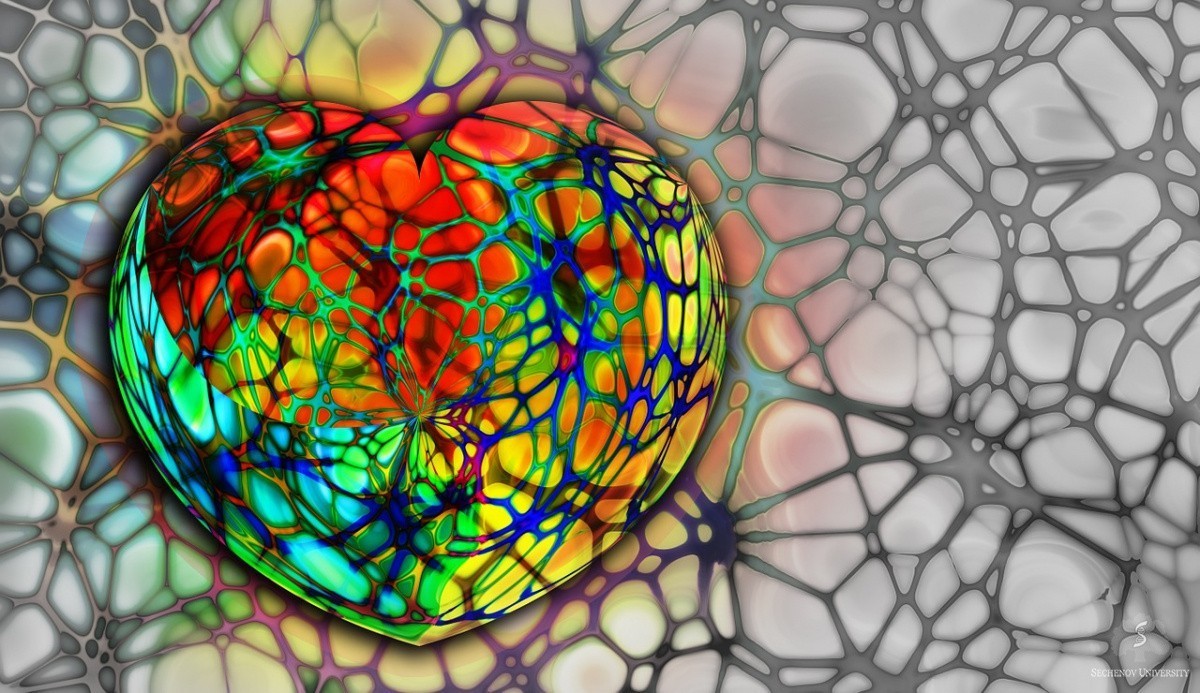-
About University
- Mission & Brand Strategy
- University Leadership
- Rector's Welcome
- History
- Regulatory Documents
- Contacts
- Staff
- International Recruitment
- Partners
Applicants- Why Sechenov University
- Degree Programmes in English
- Preparatory Courses
- Non-Degree Programmes
- Transfer from other Institutions
30.07.2020Glutamate receptor in heart is target for oxidative stress treatment
 Cardiovascular diseases are often linked to oxidative stress of the heart cells. The recent study shows that the situation can be alleviated by antagonists of the glutamate receptor. The findings can improve therapy for millions of people in the future.
Cardiovascular diseases are often linked to oxidative stress of the heart cells. The recent study shows that the situation can be alleviated by antagonists of the glutamate receptor. The findings can improve therapy for millions of people in the future.
Cardiovascular diseases are often linked to oxidative stress of the heart cells. The recent study shows that the situation can be alleviated by antagonists of the glutamate receptor. The findings can improve therapy for millions of people in the future. Cardiovascular diseases are a major cause of death and disability worldwide. According to the World Health Organisation, the risk factors include unhealthy diet, physical inactivity, excessive salt consumption, tobacco use, and alcohol abuse. Obesity, high blood cholesterol and glucose, and elevated blood pressure are the clinical signs that should signal the physicians to monitor the affected individuals closely.
But there are other, less obvious reasons for cardiovascular diseases. For example, it has been known for some time that oxidative stress caused by reactive oxygen species can trigger the pathological mechanisms which mediate heart cell damage due to ischemia. A group of researchers from Sechenov University and Serbia decided to evaluate the involvement of a receptor normally found in the nervous system, in the heart function during oxidative stress and ischemia. The results have been published in Biomolecules.
N-methyl-D-aspartate receptors (NMDAR) are complex protein structures which are anchored in the cellular membrane and can physically bind glutamate — an important amino acid. This receptor performs the function of a ‘gate’ between the inside of the cell and the outer space, helping to transport calcium ions that play a vital role in neurotransmission and muscle contraction. Oxidative stress caused by reactive oxygen species is a mechanism which is associated with ischemia and reperfusion, as well as the disturbances in calcium content and distribution.
The researchers examined how the NMDAR could be influenced by its agonists (chemicals that activate the receptor) and antagonists (chemicals that block it). For this purpose, they used hearts extracted from rats immediately after culling. The hearts were then perfused with a sequence of chemicals to restore the normal rhythm. The specimens were subjected to the NMDAR agonists, glutamate and (RS)-(Tetrazol-5-yl)glycine, as well as the NMDAR antagonists — memantine and MK-801 (also known as dizocilpine).
The two receptor agonists did not exhibit a protective effect on the function of the isolated hearts, suggesting that the activation of the cardiac NMDAR before or after ischemia is adverse to the cardiac function. On the contrary, the antagonists showed protective properties, especially MK-801.
Glutamate and (RS)-(Tetrazol-5-yl)glycine were found to induce oxidative stress, in particular by stimulating the release of O2–. In contrast, memantine and MK-801 exerted antioxidative properties.
The authors of the study conclude that the use of NMDAR antagonists, in particular MK-801, has a pronounced protective effect for the heart and is clearly associated with the suppressed production of reactive oxygen species. In this light, the cardiac NMDAR could serve as a therapeutic target in the treatment of ischemia and reperfusion injury. In the future, according to the authors, it is desirable to assess the appropriate time frame in ischemia and reperfusion to achieve the best therapeutic effect of the NMDAR antagonists.
The study is the result of a collaboration between Sechenov University, the University of Kragujevac (Serbia), the Medical and Health Centre of the Ministry of Foreign Affairs of Russia, and the University of Belgrade (Serbia).
Read more: Govoruskina N, Jakovljevic V, Zivkovic V, et al. The Role of Cardiac N-Methyl-D-Aspartate Receptors in Heart Conditioning — Effects on Heart Function and Oxidative Stress. Biomolecules (2020).
Photo credit: Pixabay 665091Embed on website
Glutamate receptor in heart is target for oxidative stress treatment
Cardiovascular diseases are often linked to oxidative stress of the heart cells. The recent study shows that the situation can be alleviated by antagonists of the glutamate receptor. The findings can improve therapy for millions of people in the future.
Cardiovascular diseases are often linked to oxidative stress of the heart cells. The recent study shows that the situation can be alleviated by antagonists of the glutamate receptor. The findings can improve therapy for millions of people in the future. Cardiovascular diseases are a major cause of death and disability worldwide. According to the World Health Organisation, the risk factors include unhealthy diet, physical inactivity, excessive salt consumption, tobacco use, and alcohol abuse. Obesity, high blood cholesterol and glucose, and elevated blood pressure are the clinical signs that should signal the physicians to monitor the affected individuals closely.
But there are other, less obvious reasons for cardiovascular diseases. For example, it has been known for some time that oxidative stress caused by reactive oxygen species can trigger the pathological mechanisms which mediate heart cell damage due to ischemia. A group of researchers from Sechenov University and Serbia decided to evaluate the involvement of a receptor normally found in the nervous system, in the heart function during oxidative stress and ischemia. The results have been published in Biomolecules.
N-methyl-D-aspartate receptors (NMDAR) are complex protein structures which are anchored in the cellular membrane and can physically bind glutamate — an important amino acid. This receptor performs the function of a ‘gate’ between the inside of the cell and the outer space, helping to transport calcium ions that play a vital role in neurotransmission and muscle contraction. Oxidative stress caused by reactive oxygen species is a mechanism which is associated with ischemia and reperfusion, as well as the disturbances in calcium content and distribution.
The researchers examined how the NMDAR could be influenced by its agonists (chemicals that activate the receptor) and antagonists (chemicals that block it). For this purpose, they used hearts extracted from rats immediately after culling. The hearts were then perfused with a sequence of chemicals to restore the normal rhythm. The specimens were subjected to the NMDAR agonists, glutamate and (RS)-(Tetrazol-5-yl)glycine, as well as the NMDAR antagonists — memantine and MK-801 (also known as dizocilpine).
The two receptor agonists did not exhibit a protective effect on the function of the isolated hearts, suggesting that the activation of the cardiac NMDAR before or after ischemia is adverse to the cardiac function. On the contrary, the antagonists showed protective properties, especially MK-801.
Glutamate and (RS)-(Tetrazol-5-yl)glycine were found to induce oxidative stress, in particular by stimulating the release of O2–. In contrast, memantine and MK-801 exerted antioxidative properties.
The authors of the study conclude that the use of NMDAR antagonists, in particular MK-801, has a pronounced protective effect for the heart and is clearly associated with the suppressed production of reactive oxygen species. In this light, the cardiac NMDAR could serve as a therapeutic target in the treatment of ischemia and reperfusion injury. In the future, according to the authors, it is desirable to assess the appropriate time frame in ischemia and reperfusion to achieve the best therapeutic effect of the NMDAR antagonists.
The study is the result of a collaboration between Sechenov University, the University of Kragujevac (Serbia), the Medical and Health Centre of the Ministry of Foreign Affairs of Russia, and the University of Belgrade (Serbia).
Read more: Govoruskina N, Jakovljevic V, Zivkovic V, et al. The Role of Cardiac N-Methyl-D-Aspartate Receptors in Heart Conditioning — Effects on Heart Function and Oxidative Stress. Biomolecules (2020).
Photo credit: Pixabay 665091



